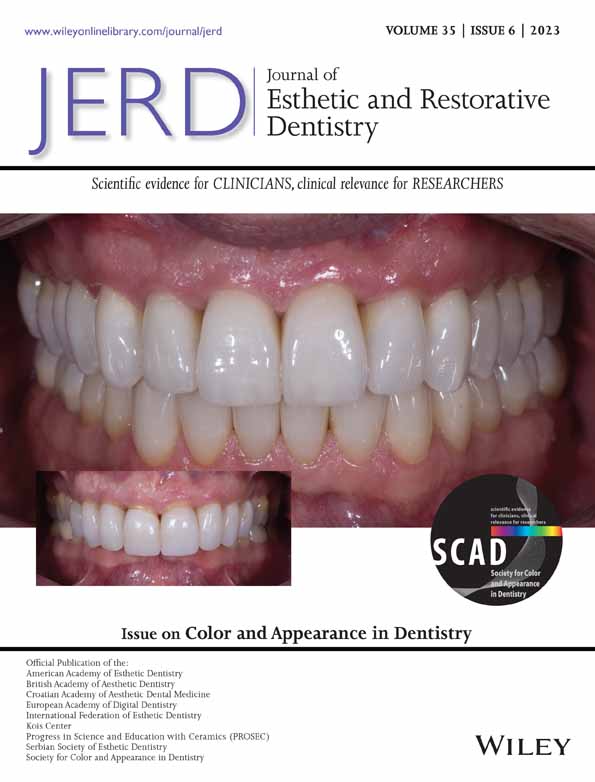Does a black light lens aid in composite removal?
Abstract
Objective
To evaluate the effectiveness of a black light lens as visual aid in composite restoration removal. Lost tooth structure, residual composite, and removal time were compared for operators with different levels of experience.
Methods
Occlusal preparations in 24 matched-pair extracted molars were etched, bonded, restored with composite, and thermocycled. The restored teeth were radiographed and two faculty and two student doctors removed the restorations with or without a black light lens while time was recorded. Digital scans of the cavity before and after restoration removal were used to calculate lost tooth structure and residual composite.
Results
Removal of restorations resulted in tooth structure loss and left residual composite. The use of the black light lens had no significant effect (two-way ANOVA; p value >0.05). However, operator experience significantly affected operating times and average depth of tooth structure loss (two-way ANOVA; p value <0.05). Student doctors assisted by the black light lost less tooth structure than experienced operators and improved their operating times (multiple comparisons; p value <0.05).
Conclusions
The black light lens did not conserve tooth structure or avoid composite remnants compared to routine operation, nor affected the operating time. However, less-experienced operators did benefit from the black light in conserving tooth structure and time.
Clinical Significance
Replacement of defective composite restorations is a regular practice in restorative dentistry. When existing composite restorations are removed, loss of tooth structure is unavoidable. A black light lens might improve the ability of operators with less experience to conserve tooth structure even though it did not provide benefits for the experienced operators.
Open Research
DATA AVAILABILITY STATEMENT
The data that support the findings of this study are available on request from the corresponding author. The data are not publicly available due to privacy or ethical restrictions.




